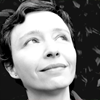Avoid Hard Work! …And Other Encouraging Problem-Solving Tips for the Young, the Very Young, and the Young at Heart
Avoid Hard Work gives a playful view on ten powerful problem-solving techniques. These techniques were first published by the Mathematical Association of America to help high school students with advanced math courses. We adapted the ten techniques and the sample problems for much younger children. The book is for parents, teachers, math circle leaders, and others who work with children ages three to ten.

Beautiful paperback for your learning library – $28. SALE $22 It comes with ePub, Kindle, and PDF files of the book.
Flat rate shipping to Australia, Ireland, and United Kingdom (UK) – US$14 per order of ANY number of paperback books.
Electronic book for all your devices – $8. You get ePub, Kindle, and PDF files of the book, DRM-free.
This book has an open license under Creative Commons. You can get the PDF at the price you name. Type the amount (from zero to infinity):
Big discounts for small bundles – with any titles
Mathematics works so much better with others! Buy together with friends, your class, math circle, or fundraiser – or treat yourself to a bundle of titles. You save on book price and shipping.
- $19 each book when you buy 2-4 books
- $16 each book when you buy 5+ books
Mix and match different Natural Math books for this offer.
Ebook discount is $3 off each ebook when you buy two or more.
Add the books to your cart. The discounts will apply automatically.
Crowdfunding Video
167 crowdfunders fully supported the book’s production – thank you!
The campaign is won, and this fun video remains! Check out James Tanton’s story about pirate islands and clever problem-solving techniques!
Problem-solving. Your days, and your child’s days, are full of it. Preparing breakfast, lunch and dinner. Getting to your appointments on time. Fixing a leaky faucet. Drawing a picture. Building a rocket. Finding hidden treasure. Solving a math problem.

Perhaps when faced with a math problem you simply know what to do. It’s like the sixth sense to you. It’s not solving the problem itself that you find difficult, but the explaining of why you did this and not that.
Or maybe math problems for you are like magic tricks without the “reveal” part. You follow all the instructions word-for-word and you do pull the rabbit out of a hat, but how did it get there in the first place?
Math, whether you are explaining it or learning it, can seem like a lot of hard work.

Is it hard to act in a play? Yes! And actors know this better than anyone. So they develop and use acting techniques. Is building a house hard? Yes! And that’s why architects and builders develop their own tools. Is math hard? Yes! Fortunately, people who do it for a living create ways to avoid hard work.
Have no idea how the bunny got into the hat? Most magicians don’t either… when they first get started. Feeling stuck and frustrated is not the end, but rather the beginning of an adventure. One of the techniques deals with this very difficult first step.

All mathematicians, scientists, and engineers go through this not-knowing stage. Anyone who solves problems for a living or as a hobby does. And many of these people don’t want to work hard if they can think of an easier way of doing things. And yes, there’s a technique for accomplishing this as well, called Avoid Hard Work.
Avoid Hard Work is one of ten powerful techniques from ten chapters of this book. Think of them as ten tools real professionals use, made accessible for children. After all, computers used to be just for a few top engineers, and now kids carry these tools in their pockets.

What might happen as a result of you reading and playing your way through this book? You might see your child doing beautiful, useful, joyful math with ease and mastery. And you might also ask: “Why was I not taught to do math this way?”
We wrote this book hoping that it will help you follow your children on their math adventures, and learning while helping them learn. Let the magic begin!
Sample Activities
Click to download sample pages. Read questions and answers, try the activities with your children, and let us know what you think!
Meet the Authors
 | Dr. Maria Droujkova is a parent, writer, and the founder of Natural Math. Maria brings together leaders in mathematics education, parents, and teachers for outdoor play, math circles, calculus for five-year-olds, and other math adventures. |
 | Dr. James Tanton is a mathematician and writer deeply interested in bridging the gap between the mathematics experienced by school students and the creative mathematics practiced and explored by mathematicians. He worked as a college professor for a decade, as a high-school teacher for a decade, and is now the Mathematician at Large for the Mathematical Association of America in Washington D.C. |
 | Yelena McManaman is a writer, education consultant, and developer, focusing on young children. Yelena homeschools her son and organizes classes and events for kids. Online, Yelena helps other parents collaborate around advanced math for young children. |
Thank you, team! Art by Ever Salazar ~ cover by Mark Gonyea ~ editing by Carol Cross, Karla Lant and beta readers ~ page design by Jana Rade.
Meet the Publisher
 | As a parent, teacher, or math circle leader, you want books that are helpful for your children. Will the book make sense? Will it add rich and beautiful math to your child’s life? Will it be fun? So that you can say YES to all of these questions, the Natural Math community has developed a unique publishing process. A quality book takes professional artists, editors, and designers – we got them! Yet great books start with dedicated authors who care enough to spend dozens of hours improving each little activity by testing it with many children, families, and classes. Then early drafts go through revisions when authors of other books help to refine the new project. This is more work and nurture than most math books ever get, but we are not done! Next, we invite beta readers – brave community volunteers who field-test the draft in their own families and classes, without the authors on-scene to help. Our beta readers are new parents and veteran homeschoolers, principals and classroom teachers, leaders of first-time math playgroups and long-running math circles. They come from all learning backgrounds and all continents (except Antarctica). Readers tell us where to add examples, which activities need more ‘wow’, which terms to explain, and what children’s questions were tough to answer. That’s how Natural Math books become so real. |
Our Dreams
What is this book really all about? Our early readers shared their worry-dreams. Here is the dream page from the book.
For our children, we dream that mathematics…
- … makes sense
- … is more than just arithmetic
- … is joyous
- … makes them strong
- … is meaningful
- … is creative
- … is full of fascinating questions
- … opens up many paths to solutions
- … is friendly
- … solves big problems and makes the world better
- … is a powerful tool they can master
- … is beautiful
- … lets them learn in their own ways
- … is connected to their lives
- … asks “why” and not just “how”
- … opens the world
Table of Contents
Introduction
Our Dreams
Teaching Techniques
Questions and Answers #1
Technique 1: Successful Flailing
Technique 2: Do Something
Technique 3: Wishful Thinking
Technique 4: The Power of Drawing
Technique 5: Make It Small
Questions and Answers #2
Technique 6: Eliminate Incorrect Choices
Technique 7: Perseverance Is Key
Technique 8: Second-Guess the Author
Technique 9: Avoid Hard Work
Technique 10: Go to the Xtremes
Questions and Answers #3
An Afterword from Dr. T
And One More Thing

Our book is published under Creative Commons license. It means that people all over the world can access its content, translate it into different languages – and share their ideas based on the book with you. The Creative Commons site Team Open features Natural Math in its celebration of innovative projects in education.
Thank you for your interest! Please help us spread the word about this book to support young problem-solving.
6 comments on “Avoid Hard Work! …And Other Encouraging Problem-Solving Tips for the Young, the Very Young, and the Young at Heart”
5 Pings/Trackbacks for "Avoid Hard Work! …And Other Encouraging Problem-Solving Tips for the Young, the Very Young, and the Young at Heart"
[…] coauthored a whole book about that called Avoid Hard Work! One thing that James really likes to do is mess with kids’ minds, show them things that look […]
[…] is definitely not kid friendly (many pages, small font, no pictures) and the other one is “AVOID HARD WORK!…And Other Encouraging Mathematical Problem-Solving Tips For the Young. The …,” which had just arrived in the mail and I was eager to read […]
[…] Natural Math’s array of books, there is one named AvoidHardWork. The types of proposals outlined within make perfect sense when the goal is to develop a positive […]
[…] might as well go check out her site Natural Math. You can't go wrong with any of the books there – Avoid Hard Work by James Tanton get it – I have a strong math crush on Dr. Tanton. They are going to help you step out of the […]
[…] *This problem from the book Avoid Hard Work […]







Excited to see this book!
Thank you for your support, Lieva! I am very excited about this book too. The campaign is doing well so far – but we need to keep spreading the word, so more parents and teachers can make their math dreams come true.
I wish I had this book with my two older kids. They have done well for themselves academically, but I really think all of these books would have been fun for us when they were little. They were naturals at math, and this could have enhanced their enjoyment and talents. I’m going to use these books with my 4 year old. Thank you all so much for making these books.
Glad you like the adventures, and I hope your four-year-old enjoys. Maybe the grown-ups will get into the playful spirit too!
Do any of your books teach how to tell time/an understanding of time in general including days of the week, today, tomorrow, yesterday, morning, afternoon, evening, and time on an analog clock?
Sarah,
Glad to see you here. So far, none of the Natural Math books are devoted to time, though I’ve developed some activities for it. One that is joyful and useful is to design your own clock face. Will you have 12 or 24 hours on it? Which way will the numbers go? Look at some novelty clocks for inspiration. This is an art and geometry project that inspires young students to figure out how clocks work.
Another activity is a scavenger hunt. Have a bulletin board ready. First, invite children to guess how long a familiar or new activity takes. E.g. read a page or the entire favorite picture book, fill the bathtub, cook an egg as you like it. Then time it; you can use different clocks and time apps for the purpose. Record on your bulletin board. Also try and find events or activities that take exactly one minute, two minutes, etc. If you count at your usual pace out loud, how far will you count in a minute? What’s your resting pulse per minute? With a strong, robust sense of time, clocks make SO MUCH MORE SENSE to children. And grown-ups learn a thing or two from this activity, as well.